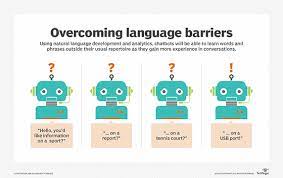The Evolution of Software: Transforming the Digital Landscape
The world as we know it today is underpinned by software. It’s the invisible force that powers our smartphones, computers, cars, and even home appliances. As technology continues to advance at a breakneck pace, software has become more sophisticated, changing how we live, work, and interact with the world around us.
What is Software?
At its core, software is a set of instructions or data that tells a computer how to perform specific tasks. It encompasses everything from the operating systems that manage computer hardware to the applications we use for entertainment, productivity, and communication.
The Early Days of Software
The history of software dates back to the mid-20th century when the first programmable computers were created. In those early days, programming was a laborious task involving punch cards and binary code. The invention of high-level programming languages like FORTRAN and COBOL in the 1950s and 1960s marked a significant leap forward in software development.
The Rise of Personal Computing
With the advent of personal computers in the late 1970s and early 1980s, software began to take on a new form. Operating systems like MS-DOS followed by Microsoft Windows provided a user-friendly interface between users and computer hardware. This era also saw the birth of iconic software applications like Microsoft Word and Excel which revolutionized business productivity.
The Internet Era
The proliferation of the internet in the 1990s changed everything once again. Web browsers became the new platform for software applications. This led to an explosion in web-based services such as email clients, e-commerce platforms, and online banking portals.
Open Source Movement
Around this time, there was also a growing movement around open-source software – programs whose source code was made available for anyone to view, modify, and distribute. This movement not only democratized software development but also led to robust platforms like Linux OS and Apache HTTP Server.
Mobile Revolution
The launch of smartphones marked another major shift in software development. Mobile apps became an integral part of daily life – from navigating routes on maps to streaming music and video content.
Software as a Service (SaaS)
In recent years, cloud computing has introduced yet another paradigm: Software as a Service (SaaS). Instead of purchasing software outright, users can now access applications over the internet on a subscription basis – think Adobe Creative Cloud or Salesforce CRM.
Artificial Intelligence & Machine Learning
Today’s cutting-edge developments are largely focused on artificial intelligence (AI) and machine learning algorithms which allow computers to learn from data patterns and make decisions with minimal human intervention. These technologies are being applied across various sectors including healthcare diagnostics, financial services fraud detection, personalized marketing campaigns among others.
Conclusion: The Future Is Software-Defined
The future promises even more groundbreaking changes with advancements such as quantum computing on the horizon which could redefine what’s possible with software once again.
The importance of security can’t be overstated either; as our reliance on digital systems grows so does our vulnerability to cyber threats which makes developing secure reliable code more important than ever before.
In conclusion while it’s impossible to predict exactly where this journey will take us one thing is certain: The role of software will only become more central in shaping our digital future.
9 Essential Tips for Enhancing Software Development and Maintenance
- Keep software updated to patch vulnerabilities and improve functionality.
- Use version control systems for collaborative development and code tracking.
- Write clean, readable code with proper comments for easier maintenance.
- Implement regular backups to prevent data loss in case of software failure.
- Prioritize user experience by designing intuitive interfaces and workflows.
- Perform thorough testing at different stages of development to catch bugs early.
- Document your software extensively, including user guides and technical specifications.
- Optimize performance by profiling and refining resource-intensive operations.
- Ensure compliance with relevant legal regulations such as data protection laws.
Keep software updated to patch vulnerabilities and improve functionality.
It is crucial to regularly update your software to not only enhance its functionality but also to patch any vulnerabilities that could be exploited by cyber attackers. By staying current with software updates, you ensure that your systems are equipped with the latest security features and performance enhancements, ultimately safeguarding your data and maintaining optimal operation of your digital tools.
Use version control systems for collaborative development and code tracking.
Using version control systems is essential for collaborative software development and effective code tracking. By implementing a version control system, developers can easily track changes made to the codebase, collaborate with team members seamlessly, and revert to previous versions if needed. This ensures that everyone working on the project is on the same page, reduces conflicts in code integration, and provides a structured approach to managing code changes throughout the development process.
Write clean, readable code with proper comments for easier maintenance.
To ensure the longevity and efficiency of your software projects, it is crucial to write clean, readable code with proper comments. By following this tip, not only does it become easier for yourself and other developers to understand and maintain the code in the future, but it also enhances collaboration and promotes better overall project organization. Clear comments provide valuable insights into the purpose and functionality of different sections of code, making troubleshooting and updates more streamlined and effective. Ultimately, investing time in writing clean, readable code with proper comments is a proactive step towards ensuring the long-term success of your software projects.
Implement regular backups to prevent data loss in case of software failure.
Implementing regular backups is a crucial tip to safeguard your data in the event of software failure. By regularly backing up your files and information, you can protect against potential data loss and ensure that you can recover important data quickly and efficiently. This proactive measure not only provides peace of mind but also helps maintain the integrity and availability of your valuable information, minimizing the impact of any unexpected software issues.
Prioritize user experience by designing intuitive interfaces and workflows.
To enhance the user experience, it is crucial to prioritize intuitive interfaces and workflows in software design. By creating user-friendly designs that are easy to navigate and understand, users can interact with the software more efficiently and effectively. Intuitive interfaces help users feel comfortable and confident while using the software, leading to increased satisfaction and productivity. Additionally, well-designed workflows streamline tasks and processes, reducing complexity and minimizing user errors. Ultimately, prioritizing user experience through intuitive design can lead to higher adoption rates, improved user retention, and overall success of the software product.
Perform thorough testing at different stages of development to catch bugs early.
Performing thorough testing at different stages of development is crucial in ensuring the quality and reliability of software. By catching bugs early on, developers can address issues promptly, saving time and resources in the long run. Testing helps identify potential vulnerabilities, functionality gaps, and performance bottlenecks, allowing for a more robust and seamless end product. Emphasizing testing throughout the development process helps maintain a high standard of quality and enhances user satisfaction with the software.
Document your software extensively, including user guides and technical specifications.
Documenting your software extensively, including user guides and technical specifications, is a crucial tip for ensuring the success and usability of your product. User guides provide clear instructions on how to use the software effectively, helping users navigate its features and functionalities with ease. On the other hand, technical specifications offer detailed insights into the inner workings of the software, aiding developers in understanding its architecture and making future enhancements or troubleshooting issues. Comprehensive documentation not only enhances user experience but also streamlines development processes, fosters collaboration among team members, and ensures long-term sustainability of the software product.
Optimize performance by profiling and refining resource-intensive operations.
To optimize performance in software, it is crucial to identify and refine resource-intensive operations through profiling. By using profiling tools, developers can analyze the execution time and resource usage of different parts of the code, pinpointing areas that require optimization. Refining these operations can lead to improved efficiency, faster processing speeds, and overall better performance of the software application.
Ensure compliance with relevant legal regulations such as data protection laws.
It is crucial for software developers and businesses to ensure compliance with relevant legal regulations, such as data protection laws. By adhering to these laws, companies can safeguard user data, maintain trust with customers, and avoid potential legal repercussions. Implementing robust data protection measures not only protects sensitive information but also demonstrates a commitment to ethical practices and responsible data management. Stay informed about the latest legal requirements and integrate them into software development processes to ensure that user privacy and security are prioritized at all times.



